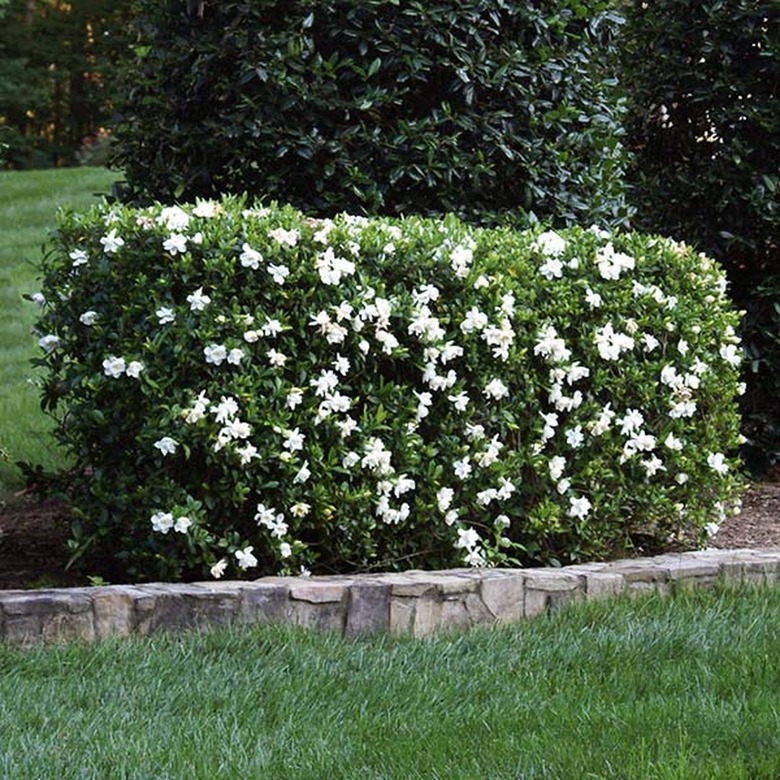How To Plant And Care For A Gardenia Bush
We may receive a commission on purchases made from links.
When you plant and care for a gardenia bush (Gardenia jasminoides), you add the beauty and fragrance of an evergreen shrub with dark-green leaves and beautiful blooms. Native to tropical climates, gardenias can be a bit picky with their growing conditions. These blooming bushes are hardy in USDA plant hardiness zones 8 to 11 with some types suitable for zone 7. Learning about the ideal growing conditions and care can help you get the most out of your gardenia plants.
1. Choose and Prepare a Site
1. Choose and Prepare a Site
Gardenias love the sun, but they don't do well in full afternoon sun. Choose a spot where your gardenia can soak up the sun all morning and get shade in the afternoon. Consider how much shelter the gardenia can get from cold winter winds in the location.
Gardenias like their soil a little on the acidic side with an ideal pH between 5.0 and 6.0. Use a soil-testing kit to check the pH in the area where you want to plant. You can adjust the soil pH to get it within the target range, but it can take time to change the pH. To raise the pH, work crushed lime into the soil. To lower the pH, you can add sulfur to the soil.
Lightweight soil that's rich in organic matter is ideal for gardenias. Adding compost is a good way to amend the soil to add nutrients and make it looser. It should also drain well.
2. Plant the Gardenia Shrub
2. Plant the Gardenia Shrub
Plan to plant your gardenia in the fall or spring. The moderate temperatures in these seasons are best. In cooler climates, spring is best to give the shrub plenty of time to establish strong roots before winter. Handle the plant carefully since transplanting and root damage can be difficult for a gardenia.
Use your shovel to dig a hole that's twice as wide and only as deep as the plant's root ball. Position the gardenia's root ball in the hole sothat the top of the root ball is level of the soil. Backfill the hole with soil, and apply mulch around the gardenia to help control soil moisture. Water the gardenia deeply right after planting.
3. Water Gardenias Properly
3. Water Gardenias Properly
Since gardenia bushes aren't drought tolerant, you need to keep up with their watering requirements. Consistent soil moisture helps your plant grow well, but too much water can hurt the roots. The plant needs about 1 inch of water every week between rain and supplemental watering. You can determine if the gardenia needs water by checking the soil. Give it a deep watering if the soil is dry 2 inches deep.
Gardenias thrive in a moderately humid environment. If things get too dry, misting your plant daily can give it the extra moisture it loves.
4. Fertilize and Prune Gardenia Shrubs
4. Fertilize and Prune Gardenia Shrubs
Fertilizer helps nourish your gardenia plant during the growing season. Use a slow-release fertilizer that's made for acid-loving plants, applied according to soil-test results. You can also use blood meal, bone meal or fish emulsion if you prefer an organic option. Two applications, one in spring and one in summer, are ideal. Make the first application once the threat of frost has passed. Fertilize six weeks after that initial application.
Pruning gardenias can help keep the plant's size and shape under control. It's also a good way to remove dead or damaged branches. Use bypass pruners to cut away the twigs you want to remove after blooming is over for the year. You can remove diseased and damaged twigs as soon as you notice the issue to keep the plant healthy.
